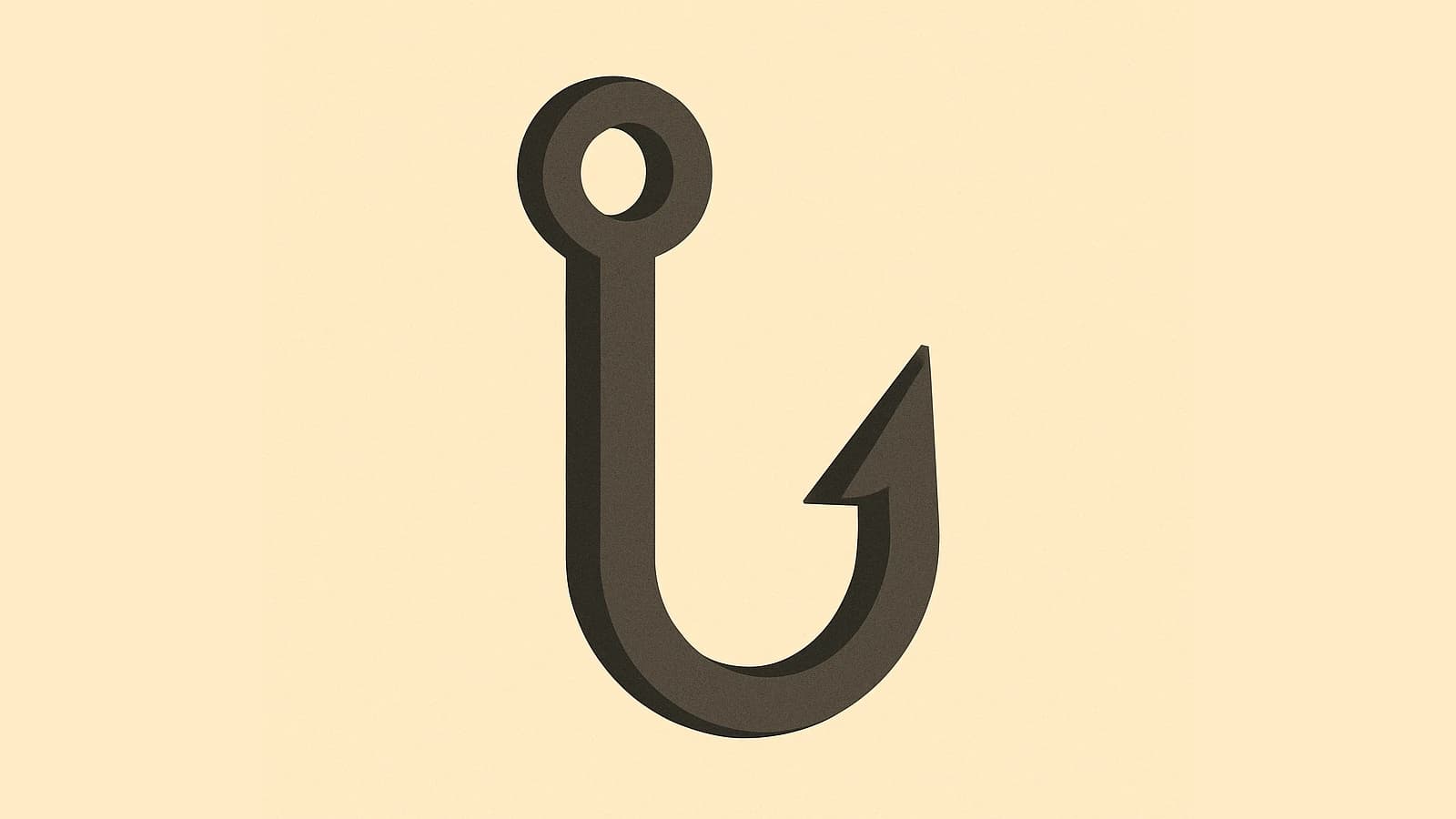Choosing the Right Tense and Point of View for Your Novel

Every writer must decide before putting pen to paper: What tense and point of view should I use? While it might seem like an arbitrary choice when you're staring at a blank page, the decision shapes how readers experience your story. The wrong choice may create unnecessary barriers between your readers and your narrative, while the right choice becomes invisible and allows your characters, plot, and prose to shine.
The short answer: Unless you have a compelling reason to do otherwise, write in third-person limited, past tense. Let's explore why, and examine when breaking this rule might serve your story better.
Understanding Point of View
Point of view determines whose eyes your readers see the story through. It's the lens that filters every scene, every thought, every emotion, every twist.
First Person
Structure: "I walked into the room and immediately knew something was wrong."
First person places readers directly inside your protagonist's head, creating an intimate reading experience that can be powerful when executed well. Readers experience thoughts and sensory details as if they're living it themselves.
Benefits:
- Creates immediate intimacy and emotional connection
- Allows for unreliable narrators (think The Great Gatsby or Gone Girl)
- Natural for memoir-style storytelling
- Readers feel like confidants to the narrator
Challenges:
- Can become repetitive ("I thought," "I felt," "I saw")
- Limited to what the narrator knows and experiences, which can restrict plot
- Can feel awkward when readers must accept another person's "I"
- Difficult to show the protagonist's appearance or mannerisms naturally without awkward exposition
Famous Examples:
- To Kill a Mockingbird by Harper Lee
- The Hunger Games by Suzanne Collins
- Gone Girl by Gillian Flynn
Harper Lee's choice of first person in To Kill a Mockingbird works because Scout's innocent perspective allows readers to gradually understand the racial injustices of 1930s Alabama alongside her. The first-person narration also creates the feel of someone looking back on their childhood, which is exactly what the story requires.
Second Person
Structure: "You walk into the room, and you immediately know something is wrong."
Second person is rare in novels for good reason—it places the reader as the protagonist, which can feel gimmicky or exhausting over hundreds of pages. However, when used skillfully, it can create a unique, immersive experience.
When it works:
- Interactive fiction or choose-your-own-adventure styles
- Experimental literary fiction
- Short fiction where the effect won't overstay its welcome
- Stories about universal experiences where "you" feels appropriate, often in non-fiction or instructional writing
Famous Examples:
- Bright Lights, Big City by Jay McInerney
- If on a winter's night a traveler by Italo Calvino
Unless you're writing experimental literary fiction with a specific artistic purpose, avoid second person for your first novel. If you're drawn to it, test the waters with a short story first. It’s exceptionally difficult to sustain for a full-length novel without alienating readers.
Third Person
Structure: "Sarah walked into the room and immediately knew something was wrong."
Third person offers the most flexibility and feels most natural to readers. It's the point of view most readers expect, which means it won't distract from your story. But third person comes in several flavours, each with distinct advantages.
The Flavours of Third Person
Limited: The Best of Both Worlds
Third person limited restricts the narrator to one character's perspective per scene or chapter. You can access that character's thoughts and feelings, but you can't jump into anyone else's head without a clear break in the narrative. This is often called "deep POV" when executed very closely to the character's experience.
Benefits:
- Allows deep character development and emotional immersion without first person's limitations
- Maintains mystery about other characters' motivations, building suspense
- Creates natural tension through limited information
- Easy to control what readers know and when they know it
- Feels familiar and comfortable to readers, enhancing readability
Example: Harry Potter series by J.K. Rowling. We experience the magical world entirely through Harry's perspective, discovering secrets and mysteries as he does, which creates good pacing for revelations. When we do get glimpses of other characters' thoughts, it’s usually inferred through Harry's observations, maintaining the limited scope.
Omniscient: The God's Eye View
The omniscient narrator knows everything about every character, every setting, and every plot thread. They can reveal any character's thoughts, jump between perspectives, and provide information the characters themselves don't possess. This narrator often has a distinct voice and can offer commentary, judgment, or philosophical insights.
Benefits:
- Complete narrative freedom to explore multiple storylines and characters
- Can build complex, multi-layered stories and worlds
- Allows for dramatic irony (readers know things characters don't)
- Can provide historical, social, or thematic context beyond characters' immediate knowledge
- Offers a broad, panoramic view of events and their implications
Challenges:
- Easy to lose focus and overwhelm readers if not carefully managed
- "Head hopping" (jumping between internal perspectives within a single scene without clear markers) can jar readers out of the story
- Can reduce tension if readers know too much too soon
- Requires skillful control to avoid confusion and maintain narrative coherence
- The narrator's voice can sometimes overshadow character experiences
Famous Examples:
- Pride and Prejudice by Jane Austen
- War and Peace by Leo Tolstoy
- The Lord of the Rings by J.R.R. Tolkien
Tolstoy's War and Peace demonstrates omniscient narration at its finest, moving between intimate character moments and sweeping historical commentary. The narrator can show us Napoleon's thoughts, then pivot to a Russian peasant, then pull back to analyze the forces of history while maintaining narrative coherence.
Objective: The Camera Lens
Objective narration presents events without revealing anyone's internal thoughts or feelings. Like a camera recording events, it shows only what can be observed externally; think dialogue, actions, and descriptions of the setting. Readers are left to interpret character emotions and motivations based solely on their observable behavior.
When to use it:
- Literary fiction that aims to create a sense of detachment
- Stories emphasizing action and external events over internal experience
- Creating distance between reader and characters, prompting intellectual engagement
- Forcing readers to interpret character emotions from behavior alone, similar to a play script or film
- When the narrative voice itself is meant to be neutral or scientific
This approach is challenging and rarely used in commercial fiction, as it can feel cold and distant. It demands a high level of skill to convey character and emotion solely through external means.
Famous Examples:
- "Hills Like White Elephants" by Ernest Hemingway (a classic short story example)
- Portions of The Old Man and the Sea by Ernest Hemingway (though not strictly objective throughout)

Understanding Tense
Past Tense
Structure: "She opened the door and gasped."
Past tense feels like natural storytelling. Someone is recounting events that have already happened. It's what most readers expect and what feels most comfortable. It provides a sense of reflection, even if subtle, and allows for the narrator to hint at future developments.
Benefits:
- Familiar and unobtrusive to readers, allowing them to focus on the story
- Allows for natural foreshadowing ("Little did she know...")
- Easy to maintain consistently throughout a novel, reducing grammatical errors
- Works well with flashbacks and memory sequences, as the past tense frames them within an already established past
- Provides a sense of narrative authority and completion
Famous Examples: Most published fiction uses past tense, from The Great Gatsby to Harry Potter. It is the overwhelming default for a reason.
Present Tense
Structure: "She opens the door and gasps."
Present tense creates immediacy and urgency, making readers feel like events are unfolding in real-time. It can be effective in fast-paced stories or those aiming for a strong sense of immersion, drawing the reader directly into the moment.
Benefits:
- Creates a powerful sense of immediacy and tension, especially in thrillers or action genres
- Makes every moment feel crucial and unfolds as if the reader is experiencing it simultaneously
- Can make readers feel more engaged with action sequences, as there's no temporal distance
- Popular in young adult fiction, where the immediacy often resonates with the themes of discovery and rapid change
Challenges:
- Can feel forced or gimmicky if not well-executed, drawing attention to the tense itself
- More difficult to maintain consistently without slipping into past tense, requiring careful editing
- Awkward for certain types of scenes (e.g., flashbacks, memories, exposition) unless handled very skillfully, often requiring a shift to past perfect tense
- The lack of narrative distance can limit opportunities for reflection or authorial commentary
Famous Examples:
- The Hunger Games by Suzanne Collins
- White Teeth by Zadie Smith
- Room by Emma Donoghue
Collins chose present tense for The Hunger Games to heighten the life-or-death tension of the arena. Every moment feels immediate and dangerous, which serves the story's themes.
Future Tense
Structure: "She will open the door and she will gasp."
Future tense is rarely used in fiction and should generally be avoided unless it serves a specific narrative purpose. It inherently implies a lack of free will or a predetermined destiny, which can be difficult to sustain and connect with emotionally. In short, the characters lack agency.
When it works:
- When themes of prophecy or destiny are central to the story
- To create a sense of impending doom or unavoidable consequence
- In very experimental literary fiction
- As a stylistic device within a larger narrative primarily in another tense, to highlight specific predictions or plans
Challenges:
- Can feel distancing and preachy, as if the story is being dictated rather than experienced
- Extremely difficult to maintain consistently and make feel natural
- Can undermine tension, as the outcome is already implied
- Not generally accepted in commercial fiction
Famous Examples: True full-novel examples of future tense are rare, often existing more as literary curiosities or mixed within other tenses.
Making Your Choice
The Default Recommendation: Third Person Limited, Past Tense
For most writers, especially those working on their first novel, third person limited in past tense is the safest and most effective choice. Here's why:
- Reader Expectations: This combination feels natural and won't distract readers from your story. It's the most common and accepted narrative mode.
- Flexibility: You can develop characters deeply while maintaining narrative freedom, moving between characters' POVs as needed (with proper scene breaks).
- Commercial Viability: Most published fiction across genres uses this combination, making it appealing to agents and publishers.
- Easier to Execute: Fewer technical pitfalls for new writers, as it's the most intuitive to write and maintain consistently.
- Genre Neutral: Works well for virtually any genre, from romance to sci-fi to literary fiction.
When to Consider Alternatives
Consider First Person If:
- Your story absolutely requires the intimate, confessional tone of a personal narrative.
- You're writing a coming-of-age story where the narrator's unique voice and internal journey are paramount.
- You want to explore an unreliable narrator whose skewed perspective is central to the plot.
- The story is one character's intensely personal journey, and other perspectives are less important.
- The genre (e.g., memoir, certain thrillers) benefits from direct narrator engagement.
Consider Present Tense If:
- You're writing high-stakes action or thriller scenes where immediacy heightens suspense.
- You're targeting young adult readers (who are more accustomed to present tense in contemporary fiction).
- The sense of "happening now" is crucial to your theme, such as a story about living entirely in the moment or facing an immediate crisis.
Consider Omniscient If:
- You're writing historical fiction or a sprawling saga with multiple important characters and intricate subplots.
- Your story spans generations, vast geographical areas, or requires a broad societal overview.
- You want to explore complex societal themes that require multiple perspectives and authorial commentary.
- You have the skill to handle complex narrative management, weaving multiple threads and perspectives without confusing the reader.
- You desire a distinct, often philosophical, authorial voice that guides the reader.
Genre Considerations
The genre of your novel often provides strong guidelines for tense and POV. While rules can be broken, knowing conventions helps you make informed choices.
Literary Fiction: More experimental choices (second person, future tense, mixed POV/tense) are acceptable and sometimes expected, as the focus can be on form and style as much as story. Young Adult (YA): First person present tense is very common and accepted, particularly in contemporary YA, for its intimacy and immediacy. Third person limited past tense is also prevalent. Romance: Third person limited (often alternating between the two romantic leads) or first person are popular, allowing readers to connect deeply with the protagonists' emotional journeys. Past tense is almost universal. Mystery/Thriller: Third person limited, past tense is standard, as limited perspectives help maintain suspense and control the reveal of information. First person can also work well for a single detective's perspective. Fantasy/Science Fiction: Third person limited, past tense is a strong default. Omniscient can also be effective, especially for epic fantasy that requires extensive world-building and multiple storylines. Historical Fiction: Omniscient or third person limited, past tense are common. Omniscient allows for rich historical context and the exploration of broad social dynamics.
Common Pitfalls and How to Avoid Them
Even with a clear choice, executing tense and POV flawlessly requires vigilance. This is also a good place to mention Inkshift. Inkshift is an instant manuscript critique tool that analyzes a story's structure, pacing, and of course, prose. It can detect tense changes, head hopping, and other common mistakes that we'll walk through next.
Head Hopping
Switching between characters' internal thoughts or feelings within the same scene, often within the same paragraph, without clear transitions. This confuses readers and breaks immersion. It's a hallmark of uncontrolled omniscient or poorly executed limited POV.
Wrong (Third Person Limited): Mary snarled at John. She couldn't believe he'd forgotten their anniversary. John noticed her expression and wondered what he'd done wrong this time. He felt a pang of guilt.
This is wrong because you get both Mary and John's internal thoughts, where only one should be present in a limited point of view.
Right (Third Person Omniscient, with clear shifts): Mary snarled at John. She couldn't believe he'd forgotten their anniversary, the date seared into her memory. John noticed her expression and immediately began to review his recent actions. Had he left the toilet seat up again? He felt a pang of guilt, wishing he could decipher the silent fury in her eyes.
Here, the omniscient narrator can access both, but the shift is more deliberate and less jarring than in the "Wrong" example.
Right (Third Person Limited, focused on Mary): Mary snarled at John. She couldn't believe he'd forgotten their anniversary. John's eyebrows furrowed in confusion. He opened his mouth, no doubt to ask what he'd done wrong this time, but Mary cut him off.
This is correct because John's reaction is filtered through Mary's point of view. His eyebrows furrowed which Mary could see for herself, and she's assuming what he will say next.
Tense Inconsistency
Starting in one tense and accidentally switching to another, often within the same paragraph or even sentence.
Common Error: Starting in past tense but slipping into present during action scenes, or vice-versa. She opened the door and gasped. A shadowy figure stands in the corner. (Incorrect) She opened the door and gasped. A shadowy figure stood in the corner. (Correct)
Perspective Confusion
Losing track of whose perspective you're writing from, especially in third person limited. This can happen when you accidentally reveal information that your POV character couldn't possibly know or access.
Solution: Clearly identify your POV character at the beginning of each scene or chapter (if rotating POVs) and stick with them throughout. Ask yourself for every piece of information: "Does this character know/see/feel this?"
Over-explaining POV Choice
Don't let your technique show. If readers notice your point of view or tense choice (unless it's a deliberate stylistic experiment), it's probably not working well for your story. The goal is for the narrative choices to feel invisible, allowing the reader to become fully immersed. Avoid calling attention to your narrative decisions within the text.
Advanced Techniques
While generally not recommended for debut novelists, some seasoned authors skillfully employ more complex narrative structures.
Multiple POV
Some novels successfully use multiple points of view, switching between characters across chapters or sections. This requires careful management—clear chapter headings, distinct character voices, and consistent adherence to each character's limited perspective within their section to avoid confusion. It also generally requires a limited number of perspectives so that readers have time to fully explore each character.
Examples:
- Game of Thrones by George R.R. Martin (third person limited, rotating characters chapter by chapter)
- The Poisonwood Bible by Barbara Kingsolver (multiple first person narrators, each with a distinct voice)
- The Girl on the Train by Paula Hawkins (multiple first person, present tense narrators)
Mixed Tense
Some authors skillfully mix tenses for specific effects, though this is advanced territory and must be done with extreme precision and purpose. Careless mixing of tenses is a common editing mistake.
Example: The Handmaid's Tale uses primarily present tense for immediate scenes to create urgency, but past tense for memories and historical sections, clearly demarcating the different timeframes and creating layers of narrative.
The Bottom Line
Your choice of tense and point of view should be invisible to readers when done well. It should serve your story, not distract from it. The most important thing is to make a conscious choice and stick with it consistently throughout your novel. And when in doubt, choose third person limited past tense.
If you'd like to read other guides on how to hone your writing craft, check out this article on how to craft tension in fiction, or this article on how to show not tell. Good luck!

